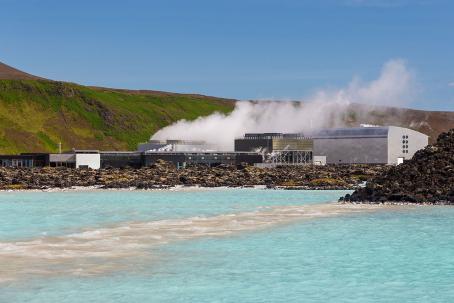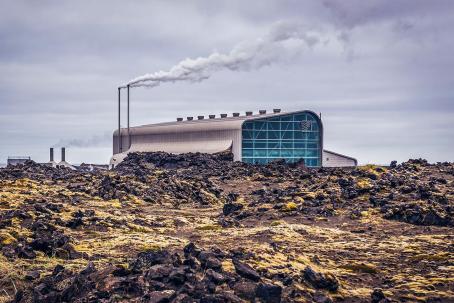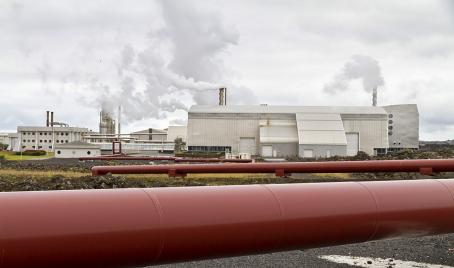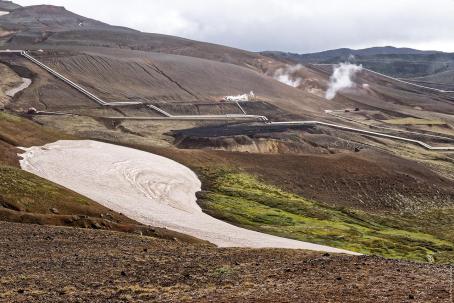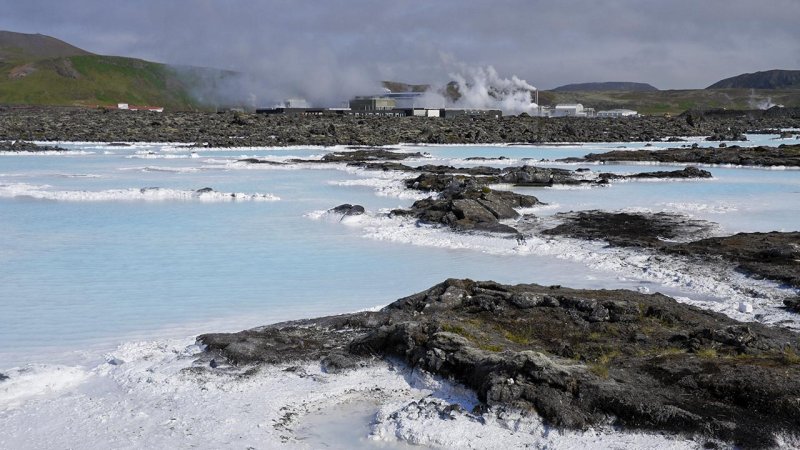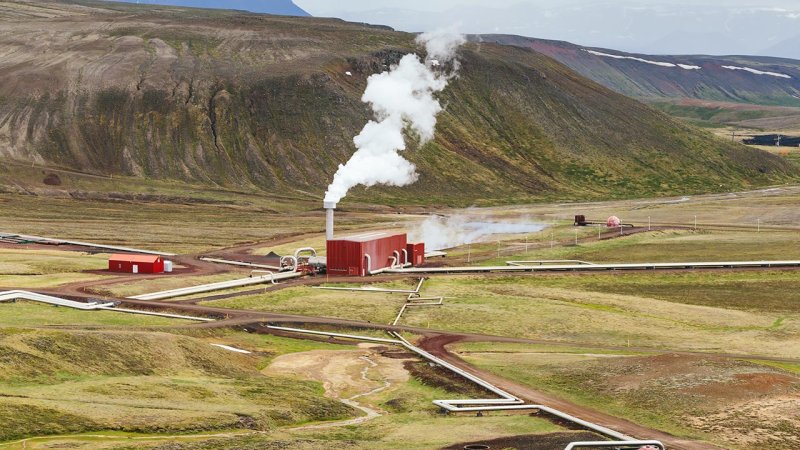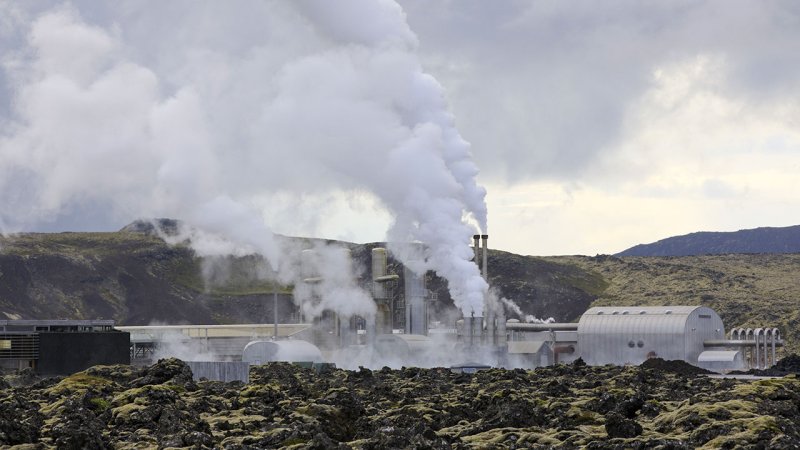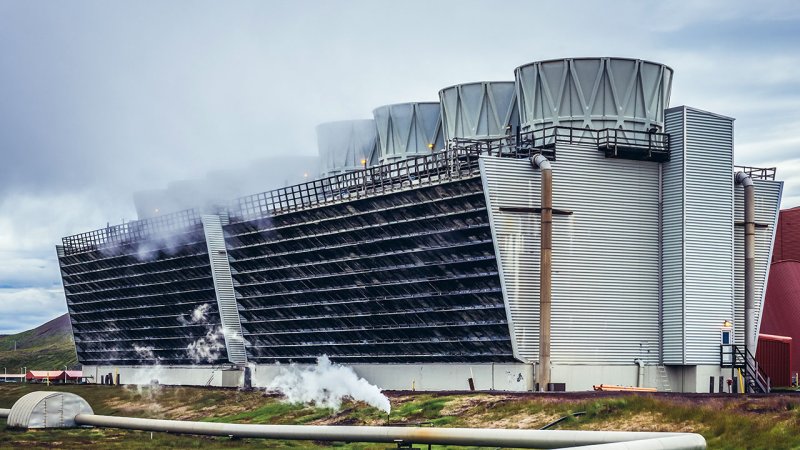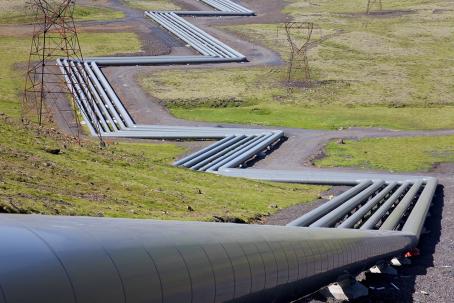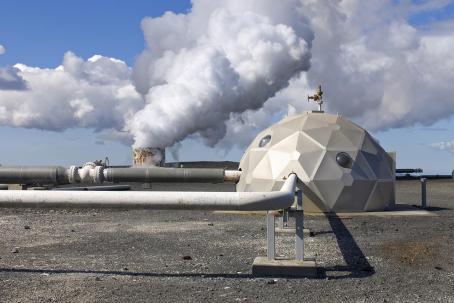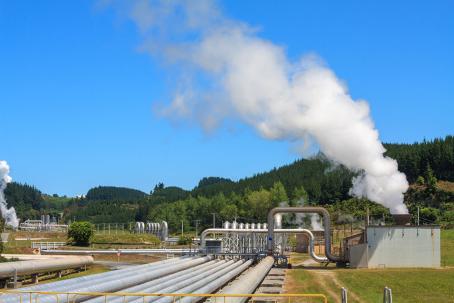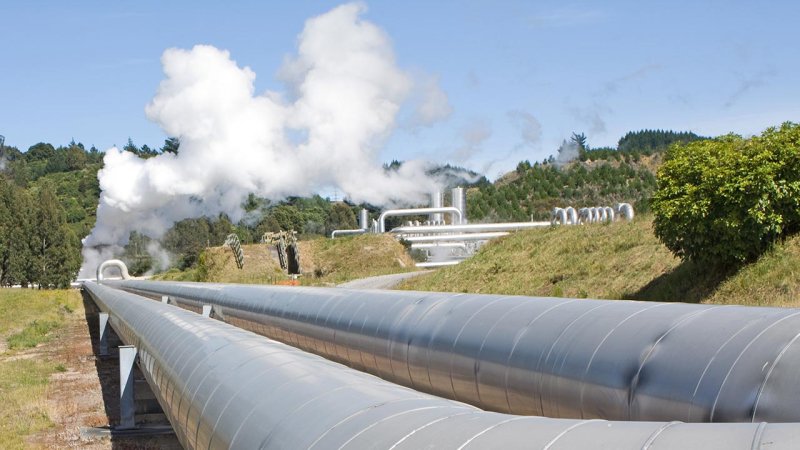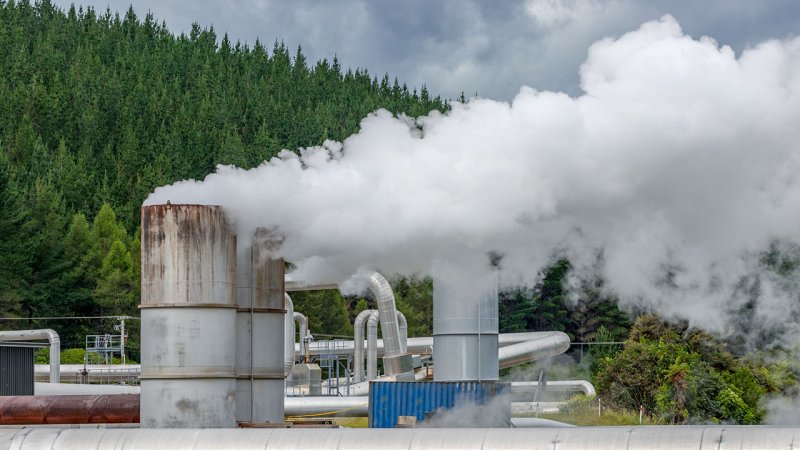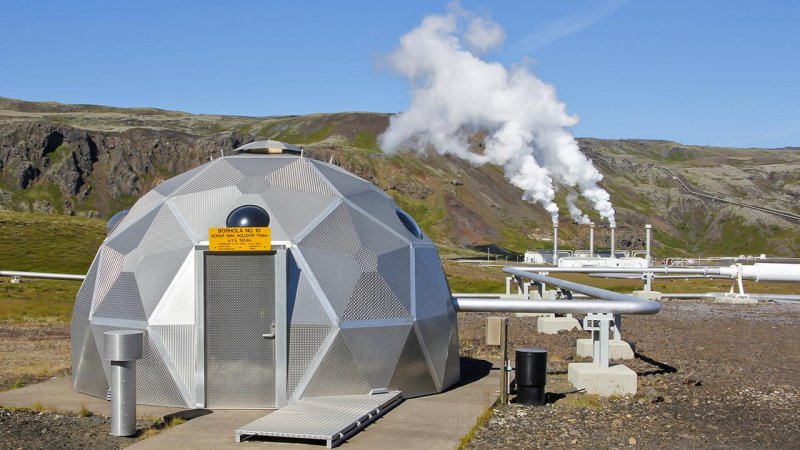
Geothermal Power Plant
8 min read
Geothermal Power Plant Types
Hot Dry Rock (HDR) Geothermal Energy.
The superfluous, mineral-rich water from the Svartsengi geothermal power plant (Iceland) fills the Blue Lagoon — a popular thermal spa.
Geothermal power plants harness the heat coming from the depths of the Earth to produce electrical energy. If the geothermal field has a sufficient water source, the type of the power plant will be dependent on the properties of the water streaming from the bore. If there is not enough water in the field, a heat-conductive medium needs to be artificially injected.
Geothermal power plants which utilize the Earth’s internal heat work on the principle of converting the internal energy of steam into mechanical energy which is then used to generate electricity in a Rankine cycle. Depending on the input parameters and the method of steam extraction, geothermal power plants can be divided into three categories: dry steam, flash steam and binary cycle.
The modern building of a geothermal power plant (Iceland), where the energy of the Earth is converted into electricity.
Dry Steam Geothermal Power Plants
Superheated steam from geothermal fields is directly used to power the turbines of these types of power plants. The first geothermal power plants were of this type. The temperature of the steam is about 250 °C and the pressure is around 3.5 MPa and after separation, it is led directly into the turbine. After releasing its energy and after condensation, the water is pumped through neighbouring bores back into the geothermal reservoir. The efficiency of this thermodynamic cycle is not very high; only about 15%. Examples of dry steam geothermal power plants can be found in Larderello in Italy (map) or in the Geysers region of California (map).
Flash Steam Geothermal Power Plants
The tubing supplying the transmission medium from individual wells to the Svartsengi power plant, Iceland.
These use water mixed with steam or sufficiently hot water at high pressures. This is the most common type of geothermal power plant to date. Since the hot water or the steam-water mixture cannot be used directly to power the turbine, it has to pass through separators in which the superheated water undergoes flash evaporation induced by lowering the pressure, and then the water is led to the turbo generator. The remaining water along with the condensed water from the steam is pumped back into the geothermal reservoir. The efficiency of flash steam geothermal power plants lies between 8 and 10%.
Binary Cycle Geothermal Power Plants
The advantage of this type of power plant is the possibility of using water at relatively low temperatures (85 to 180 °C). The water is run through a heat exchanger with another cycle containing a different working medium (CFC, propane, 2-methylpropane) which has a lower boiling point, then drives the turbine. Thus the geothermal water never comes into contact with the turbine and from the evaporator it is pumped back to the geothermal reservoir. The future of binary cycle geothermal power plants depends on whether or not a more environmentally friendly working medium can be found. The thermodynamic efficiency of binary cycle geothermal power plants lies between 10 and 13%. Examples can be found at Steamboat Springs in Nevada or Hilo in Hawaii.
The Chena Hot Springs binary cycle geothermal power plant in Alaska uses water that only has 57 °C. The water temperature is the lowest of all geothermal power plants in the world and in 2006 this plant was awarded the Project of the Year Award by Power Engineering Magazine in the renewable energy category.
Largest Geothermal Power Plants in the World
The piping system of the Hellisheidi geothermal power plant, nearby the Icelandic capital of Reykjavík.
Geothermal power plants are concentrated in areas of geologic faults where heat sources can be found close to the surface. The largest plants can be found in Mexico (Cerro Prieto), Iceland (Hellisheidi), Indonesia (Wayang Windu) or New Zealand (Wairakei).
Cerro Prieto, Mexico (map)
The Cerro Prieto geothermal power plant in Mexico with an installed capacity of 720 MW is the largest geothermal power plant in the world. The hot water in the reservoir reaches temperatures as high as 350 °C. Along with the vast expanse of this field, this provides unique conditions for harnessing its energy. The first powerhouse of the installation is equipped with five turbines with a total output of 180 MW. The powerhouse was commissioned in 1973 and 1981. In 1982 and 1983 two more powerhouses were completed with two 110 MW units each. The fourth and fifth powerhouses both have an installed capacity of 100 MW. The last, fifth, part should be completed in 2012, increasing the output to 820 MW.
Geothermal wells near the town of Reykjavík (Iceland), which reach as deep as 1,600 meters below the surface and, aside from Reykjavík, supply the nearby Hellisheidi geothermal power plant.
Hellisheidi, Iceland (map)
The second largest geothermal power plant in the world is located in the southwest of Iceland on top of the Hengill volcanic ridge. Aside from generating electricity, the power plant supplies heat to the city of Reykjavik which makes it a cogeneration plant. Five turbines are installed here with outputs between 33 and 45 MW. At the end of 2010 the installed capacity of the power plant was 213 MW. Once the plant is fully operational, the installed capacity should reach 300 MW and the estimated heating energy should amount to 400 MW.
Wayang Windu, Indonesia (map)
The Wayang Windu power plant is the largest geothermal power plant in Indonesia and the third largest in the world. It is located in the western part of the island of Java in the vicinity of Bandung. Its source of steam is a geothermal field consisting mainly of hot water. There are also several steam reservoirs above the hot water reservoir. Currently, two units are operating in the plant (110 and 117 MW) but before the end of 2013, a third unit with an installed capacity of 127 MW should be brought online. All the units operate on the flash steam principle with steam at a temperature of 300 °C containing virtually no pollutants.
Wairakei, New Zealand (map)
The Wairakei geothermal power plant is situated in the central part of the northern island of New Zealand in the active volcanic region of Taupo. It was built in 1958 as the second geothermal plant in the world and the first to use flash steam. Originally, it was meant to also produce heavy water but in 1956 this plan was dropped. In the eighties, experiments took place with the injection of part of the water back into the reservoir.
For a more complex utilization of the hot water, a binary cycle powerhouse was added in 2005, increasing the total output to 181 MW.



